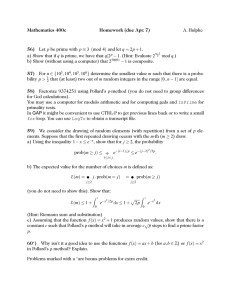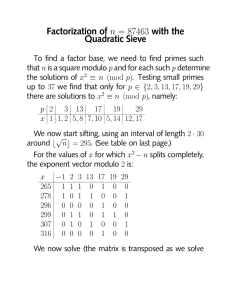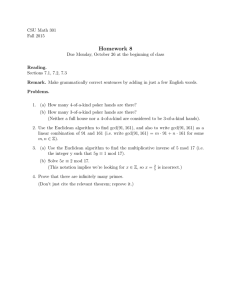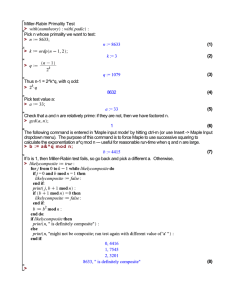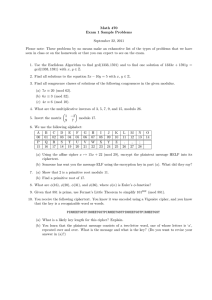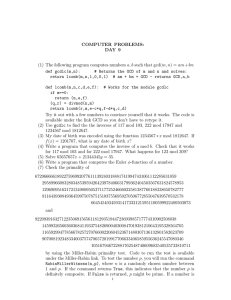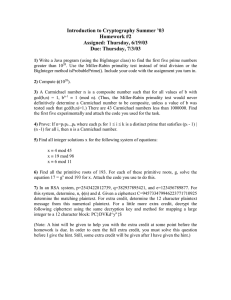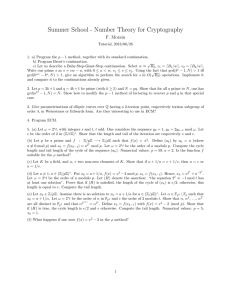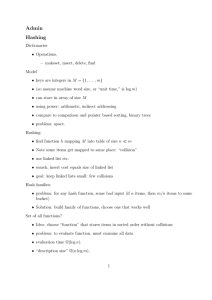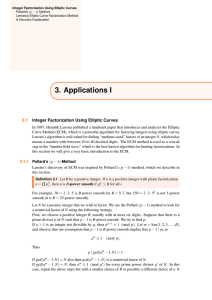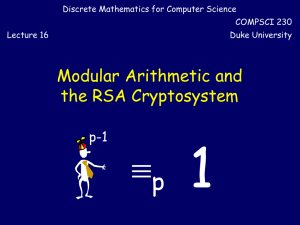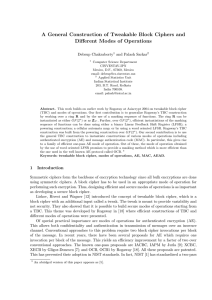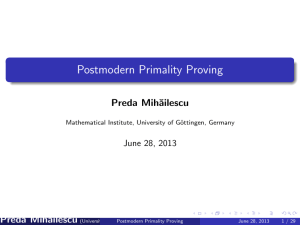Mathematics 360 Homework (due Dec 11) A. Hulpke
advertisement
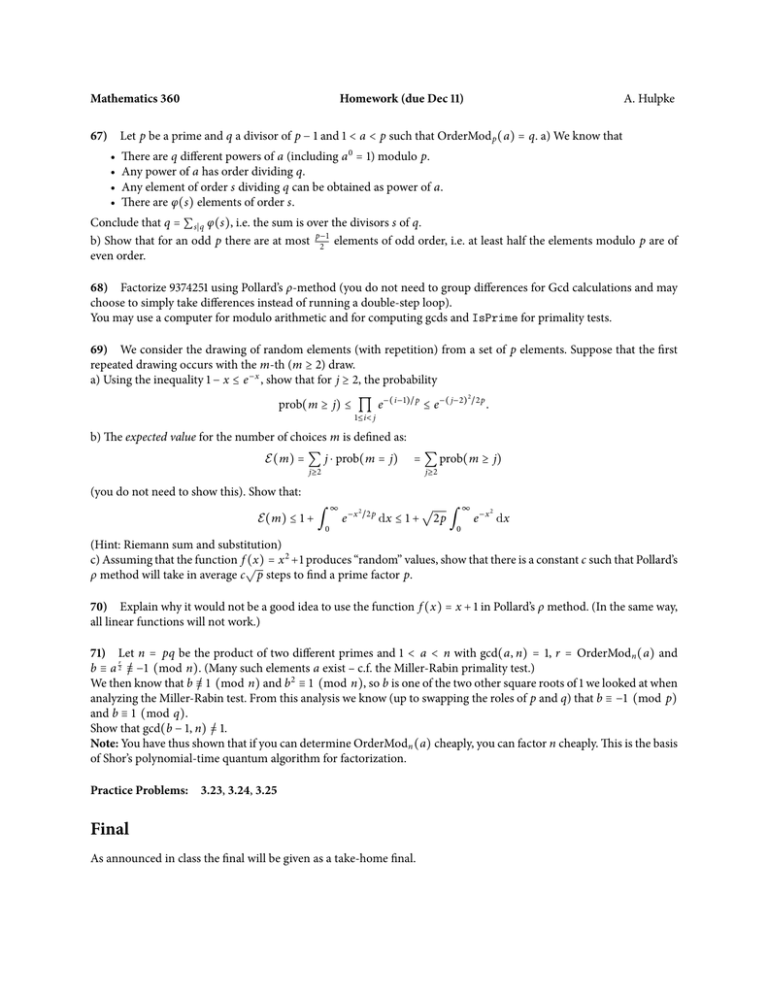
Mathematics 360 A. Hulpke Homework (due Dec 11) 67) Let p be a prime and q a divisor of p − 1 and 1 < a < p such that OrderMod p (a) = q. a) We know that • • • • There are q different powers of a (including a 0 = 1) modulo p. Any power of a has order dividing q. Any element of order s dividing q can be obtained as power of a. There are φ(s) elements of order s. Conclude that q = ∑s∣q φ(s), i.e. the sum is over the divisors s of q. p−1 b) Show that for an odd p there are at most 2 elements of odd order, i.e. at least half the elements modulo p are of even order. 68) Factorize 9374251 using Pollard’s ρ-method (you do not need to group differences for Gcd calculations and may choose to simply take differences instead of running a double-step loop). You may use a computer for modulo arithmetic and for computing gcds and IsPrime for primality tests. 69) We consider the drawing of random elements (with repetition) from a set of p elements. Suppose that the first repeated drawing occurs with the m-th (m ≥ 2) draw. a) Using the inequality 1 − x ≤ e −x , show that for j ≥ 2, the probability prob(m ≥ j) ≤ ∏ e −(i−1)/p ≤ e −( j−2) 2 /2 p . 1≤i< j b) The expected value for the number of choices m is defined as: E(m) = ∑ j ⋅ prob(m = j) = ∑ prob(m ≥ j) j≥2 j≥2 (you do not need to show this). Show that: E(m) ≤ 1 + ∫ 0 ∞ e −x 2 /2 p dx ≤ 1 + √ 2p ∫ 0 ∞ 2 e −x dx (Hint: Riemann sum and substitution) c) Assuming that the function f (x) = x 2 +1 produces “random” values, show that there is a constant c such that Pollard’s √ ρ method will take in average c p steps to find a prime factor p. 70) Explain why it would not be a good idea to use the function f (x) = x + 1 in Pollard’s ρ method. (In the same way, all linear functions will not work.) 71) Let n = pq be the product of two different primes and 1 < a < n with gcd(a, n) = 1, r = OrderModn (a) and r b ≡ a 2 ≡/ −1 (mod n). (Many such elements a exist – c.f. the Miller-Rabin primality test.) We then know that b ≡/ 1 (mod n) and b 2 ≡ 1 (mod n), so b is one of the two other square roots of 1 we looked at when analyzing the Miller-Rabin test. From this analysis we know (up to swapping the roles of p and q) that b ≡ −1 (mod p) and b ≡ 1 (mod q). Show that gcd(b − 1, n) =/ 1. Note: You have thus shown that if you can determine OrderModn (a) cheaply, you can factor n cheaply. This is the basis of Shor’s polynomial-time quantum algorithm for factorization. Practice Problems: 3.23, 3.24, 3.25 Final As announced in class the final will be given as a take-home final.

